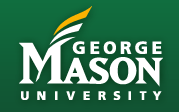A Workshop in Conjunction with GIScience 2008
|
GIScience 2008 |
||||||
 | ||||||
| Download Workshop Materials (13.6 Mb zip) | ||||||
|
||||||
|
|
The term cyberinfrastructure (CI) is being used with
greater frequency to refer to how the traditional modes of scientific research
(e.g., experimentation in the lab, observation in the field,
processing/analyzing on a single calculator or computer, calculations on the
back of an envelope) are being extended or replaced by advancements in
information technology. Distributed computing is a particularly important part
of the activity, as the computing power in CI for serving, rendering,
analyzing, and simulating data may be as distributed as the data sets
themselves (e.g., execution of data on one machine, rendering on another,
send to another machine for GIS analysis, etc.). And this distribution often
implies that data producers and providers are willing and able to share their
products, often in near real-time. Full utilization of these advancements is
an emerging area for GIScience with special considerations for geospatial
"grid computing," the so-called "GIS 2," and the development of new
frameworks for searching and analyzing huge datasets from regional
observatories and sensor networks over the web. CI addresses some fundamental
themes and research priorities in GIScience, such as distributed and mobile
computing, spatial information infrastructures, distributed geospatial data
mining, and the geospatial semantic web, all of which are closely related to
the main themes of the GIScience 2008 conference.
Workshop Schedule & Presentations | Contacts Background & Workshop TopicsNSF formed the Office of CI and released the vision document Cyberinfrastructure Vision for 21st Century Discovery. "Geography," "geospatial" and "geographic information science" are barely mentioned in this document, indicating an opportunity and unique niche that GIScience might fill. Recent momentum on this topic includes the formation of the new CI Specialty Group of the AAG and the presentation of geospatial CI research projects at recent AAG meetings in San Francisco and Boston. A CI interest group was formed at the 2007 UCGIS Summer Assembly, with an eye toward proposing workshops on this theme for the GIScience community. In addition, "GIScience and Cyberinfrastructure: Making Global Connections," was the main theme of the UCGIS Winter Assembly in Washington, DC (February 2008), featuring speakers from various government agencies. NSF is ramping up CI funding, so what is the geospatial niche and how can we convey these CI needs to NSF? GEON, NEON, ORION, already exist for geology/geophysics, ecology/biology, and the oceans respectively. USGS/FGDC leads the effort in building the national spatial data infrastructure, which is directly contributing/leveraging CI while at the same time facing problems, such as performance and semantics. So we need to address what hasn't been addressed yet. A geospatial niche might involve more extensive connections to society/GIScience/social science/humanities. The time is ripe for articulating a "Geospatial CI Research Agenda," identifying what has been accomplished and where the new opportunities exist. Therefore, the CI workshop at GIScience 2008 aimed to continue the momentum of these prior activities by:
Intended Workshop AudienceThis workshop welcomed those new to the topic of CI and interested in joining this community of researchers, as well as those who are already establishing themselves in this realm. We sought to raise the awareness of CI within the GIScience community and to serve specific application domains within and outside of GIScience. We plan follow-up workshops at other venues along these lines. Goals and Expected OutcomesThe workshop is expected to deliver two outcomes:
Workshop Schedule and PresentationsDownload pdf notes from all sessions9:00 - 9:15 - Welcome and introduction by Dawn Wright (Oregon State), including goals of workshop, round-the-table intros of participants [pdf of presentation] 9:15 - 9:45 - Shaowen Wang (U. Illinois, Urbana-Champaign) - "Bridging CI and GIScience - A Holistic Approach" [pdf of presentation] 9:45 - 10:15 - Phil Yang (George Mason) - "GeoCyberinfrastructure" [pdf of presentation] 10:15 - 10:45 - Rob Raskin (NASA JPL) - "Knowledge as CI: Toward Geographic Knowledge Systems (GKS)" [pdf of presentation] 10:45 - 11:00 - BREAK 11:00 - 12:00 - Tim Nyerges (U. Washington) - "GIScience Knowledge Web" [pdf of presentation] 12:00 - 1:00 - LUNCH (Organizers meet to further refine afternoon slots)
1:00 - 2:00 - Lynn Usery (USGS) - "The National Map Relationship to NSDI and NGP"
[pdf of presentation]
2:00 - 4:00 - Combine with Service Oriented Architecture (SOA) Workshop
Discussion of community needs and related NSF program announcements. Concluding
discussion of linkages with AAG CI specialty group activities, special issues
for the Proceedings of the National Academy of Sciences and
Cartographica, related book projects in development, and other action
items and opportunities. We will maintain an email listserv and/or wiki (likely by the AAG CI Specialty Group) to continue the discussions. ContactsWorkshop organizers:
|





